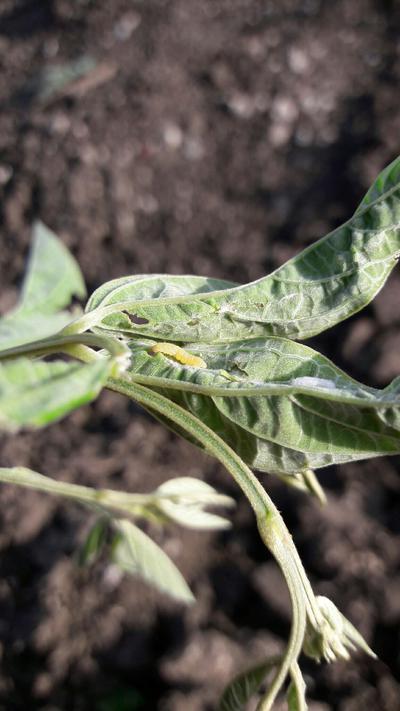Leaf Webber
Eucosma critica
Insect
In a Nutshell
- Webbed leaflets.
- Flowers and pods affected.
Can also be found in
Symptoms
Leaflets are webbed together. Terminal buds are often inside the web, which prevents the growth of the shoot. Leaves will become white and dry up.
Recommendations

Organic Control
To this day, we are not aware of any biological control method available against this disease. If you know of any successful method to reduce the incidence or the gravity of the symptoms, please contact us.

Chemical Control
Always consider an integrated approach with preventive measures together with biological treatments if available. Broad-scale insecticides need to be avoided, as they may kill beneficial insects. Chemicals that control Helicoverpa caterpillar, spotted pod borer or plume moth will take care of the leaf webber.
What caused it?
The damage is done by the larvae of Eucosma critica (formerly Grapholotha critica). The female moths, brown in color, lay their eggs on leaf buds and young leaves. The creamy-yellow larvae will then bind leaves together and feed on the tender shoots while remaining inside the web. The pupation also happens within the webbed leaf. Plants are affected throughout the season. The crop is severely affected, if infestation starts at the seedling stage. The pest incidence is favored by temperatures between 23°C and 30°C. It is a minor pest and does not cause much economic damage.
Preventive Measures
- Plant resistant or tolerant varieties if available.
- Grow intercrops like marigold or castor.
- Monitor your field for webbed leaves.
- Collect and destroy infested plant parts.
- Conserve natural predators and parasitoids that help manage the pest population.



